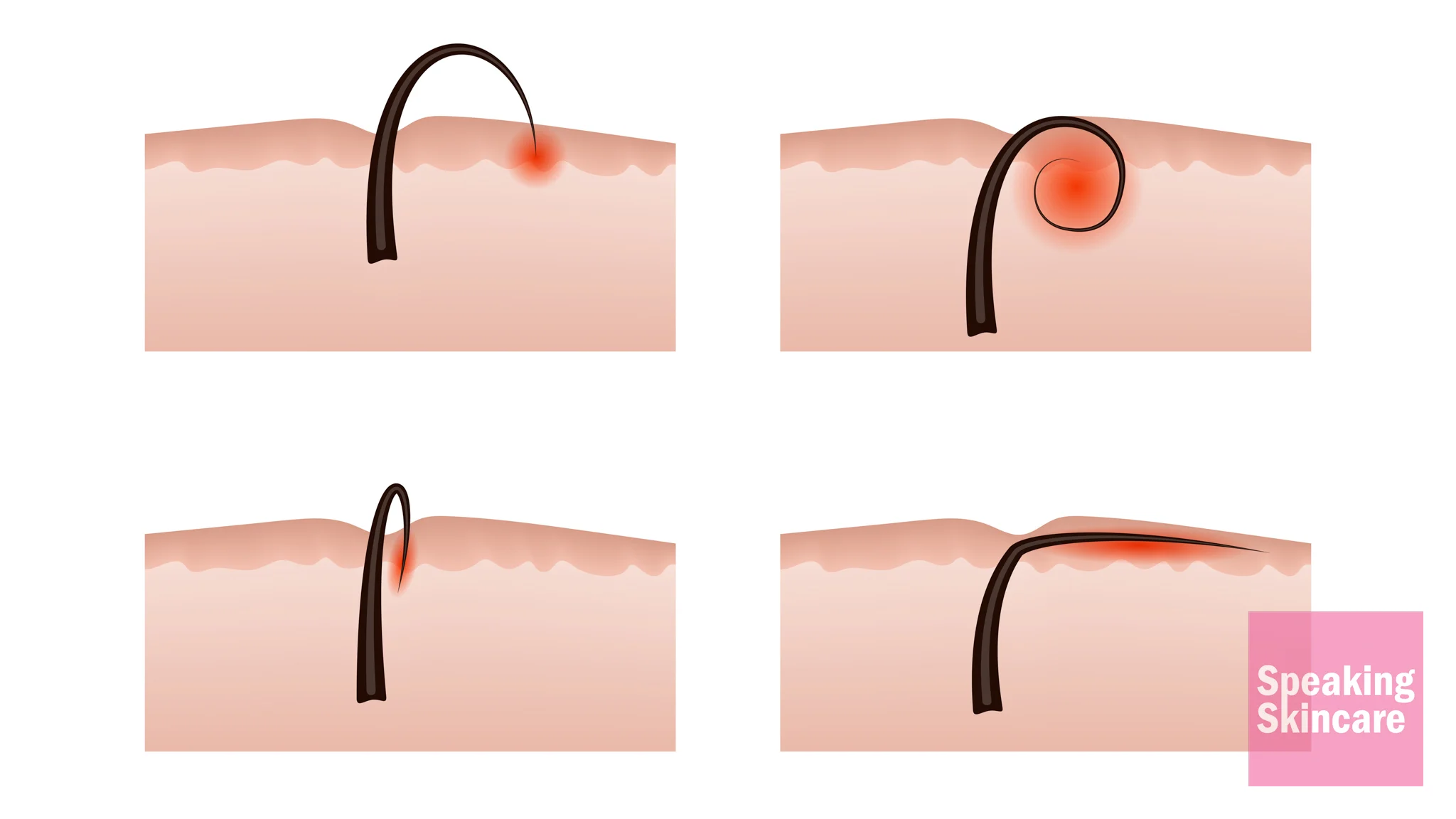Dark spots, or hyperpigmentation, can be caused by many things. However, one of the most common reasons why they form is because of the irritation caused by ingrown hair.
Keep reading to learn why you’re getting ingrown hairs, why they create dark spots, and what you can do about it. Thankfully, it’s really quite simple.
Let’s go!
What causes ingrown hair?
First of all, we need to understand what ingrown hair is and why we get it. Ingrown hair is when the growth of a hair strand is blocked or impeded in some way, either by dirt or a blocked pore. When this happens, the hair fails to break through the surface of the skin and can curl around on itself, leading to skin irritation.
The most widespread cause of ingrown hair is shaving. When we shave, we want the razor blade to cut the hair as close to the skin as possible so we can get that smooth feel. However, sometimes the razor can cut the hair at a strange angle, leaving the tip of that hair sharp. This sharp point then digs into the skin and becomes stuck, forming an ingrown hair. Waxing and plucking can also create ingrown hair by severely damaging the hair follicle and interrupting its natural growth path.
How does ingrown hair cause dark spots?
The answer to this question is actually rather interesting. When hair becomes ingrown and gets stuck beneath the surface of the skin, it can lead to irritation in the form of redness, bumpiness, and most of all, inflammation. When this inflammation is detected, the body enters a natural protective mode. In order to fight the inflammation and the possible presence of bacteria, the skin creates more melanin as a defensive response, which can then lead to dark spots forming.
So really, if you’re getting dark spots as a result of ingrown hair, you know your body is actually working the way it’s supposed to in that situation. Pretty neat, right?
How to get rid of dark spots
Of course, we can all marvel at the majesty of the human body, but what you really want is to solve this problem. Don’t worry, we’re on it.
Exfoliate
The first step towards removing dark spots is to find and use a good exfoliator. Exfoliators, or scrubs, use powerful ingredients like Vitamin A, glycolic acid, mandelic acid, and lactic acid, to stimulate a process of cell turnover in the skin. Basically, cell turnover is the removal of old dead cells that creates room for new healthy cells to emerge. This is how areas of pigmentation disappear.
Exfoliators will also comprehensively clear your pores of any gunk and scrape away dirt that has accumulated on the skin over time, leaving the skin in a much cleaner and healthier position.
Use brighteners
In combination with exfoliators, using brightening products on dark spots will also go a long way in helping to rebalance skin tone. Brightening cosmetics containing potent ingredients such as Vitamin C, kojic acid, and hydroquinone, can massively help to lighten the skin and lessen the visual appearance of dark spots and pigmentation.
Sunscreen
The sun can make dark spots and pigmentation much, much worse. The sun’s UV rays are ultra-powerful and can really damage the skin if left unprotected. This is why we recommend wearing sunscreen whenever you go outside on a sunny day, even if it’s not a particularly “summery” day. Use sunscreen with SPF 30 as a minimum.
Not enough people take sun protection seriously enough, so set a good example and do the right thing for your skin.
How to prevent getting ingrown hair
Of course, the best way to protect yourself against dark spots is to not give them the opportunity to form in the first place, which means doing everything you can to stop the emergence of ingrown hair.
When shaving, always shave in the direction of the hair growth. This will ensure the hair is cut evenly and cleanly. Shaving against the grain significantly increases the likelihood of ingrown hair and further skin irritation.
Additionally, using a well-regarded exfoliator on a regular basis, maybe 3-4 times a week, will give the skin a great chance of staying ingrown hair-free. As we mentioned above, exfoliators disperse dead cells, remove dirt, and clear the pores effectively. Keeping the skin as exfoliated as possible consistently will really do the world of good.
Conclusion
There you have it! Ingrown hair is extremely common and a constant source of dark spots, but the solutions are simple and impactful.
Always take care when shaving, and ensure the skin has suitable aftercare. Do yourself a big favor and protect your skin from sun damage by wearing sunscreen when needed, and use fantastic exfoliators to clear the way for healthy skin and hair growth.
